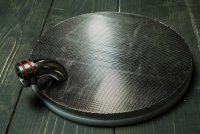Oceangrace24
Well-Known Member
How is it going with everyone regarding mash temperatures and consistency?
One of my top reasons for making the jump to electric was for mash temperatures. I want to be able to control my mash as precisely as possible. I want to be able to mash a beer at 152° and then turn around and mash the same recipe at 154° to see the difference and so forth.
I read some early posts about the temperature being off between the temp probe and the middle of the grain bed.
Just wondering if anyone has made any progress on getting these more consistent.
Should be brewing here on my new Solo 20 in the next week or so.
One of my top reasons for making the jump to electric was for mash temperatures. I want to be able to control my mash as precisely as possible. I want to be able to mash a beer at 152° and then turn around and mash the same recipe at 154° to see the difference and so forth.
I read some early posts about the temperature being off between the temp probe and the middle of the grain bed.
Just wondering if anyone has made any progress on getting these more consistent.
Should be brewing here on my new Solo 20 in the next week or so.



















































![Craft A Brew - Safale BE-256 Yeast - Fermentis - Belgian Ale Dry Yeast - For Belgian & Strong Ales - Ingredients for Home Brewing - Beer Making Supplies - [3 Pack]](https://m.media-amazon.com/images/I/51bcKEwQmWL._SL500_.jpg)











